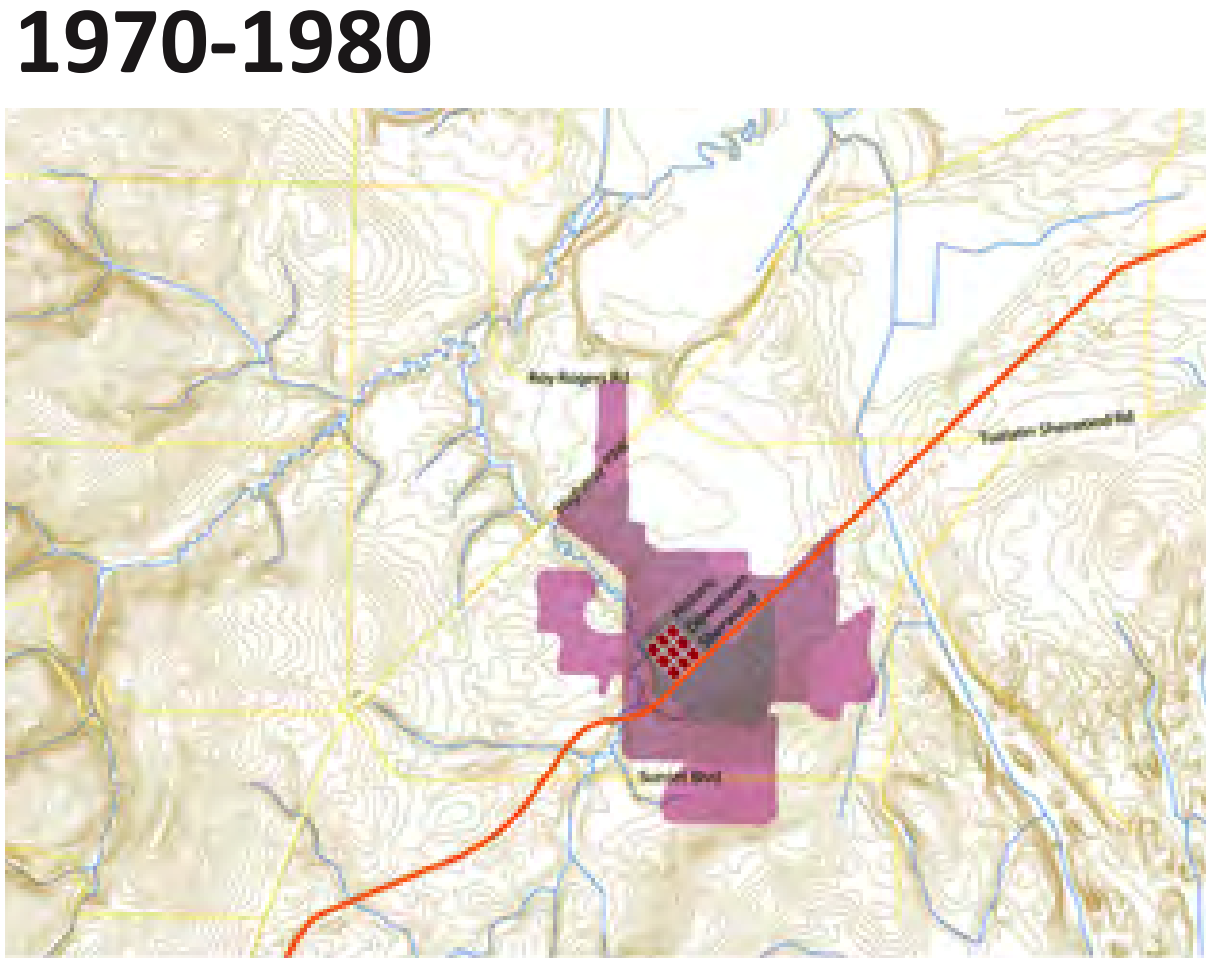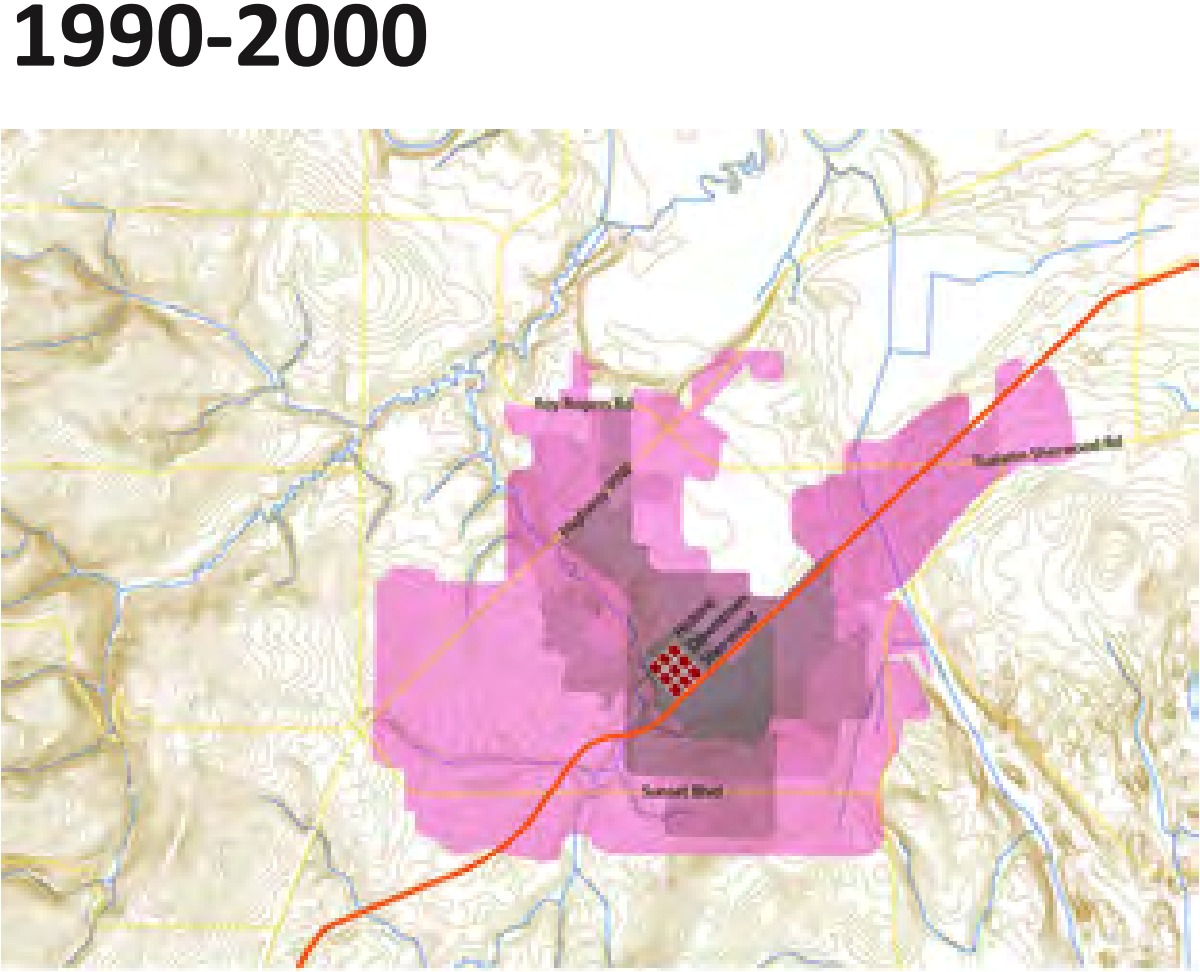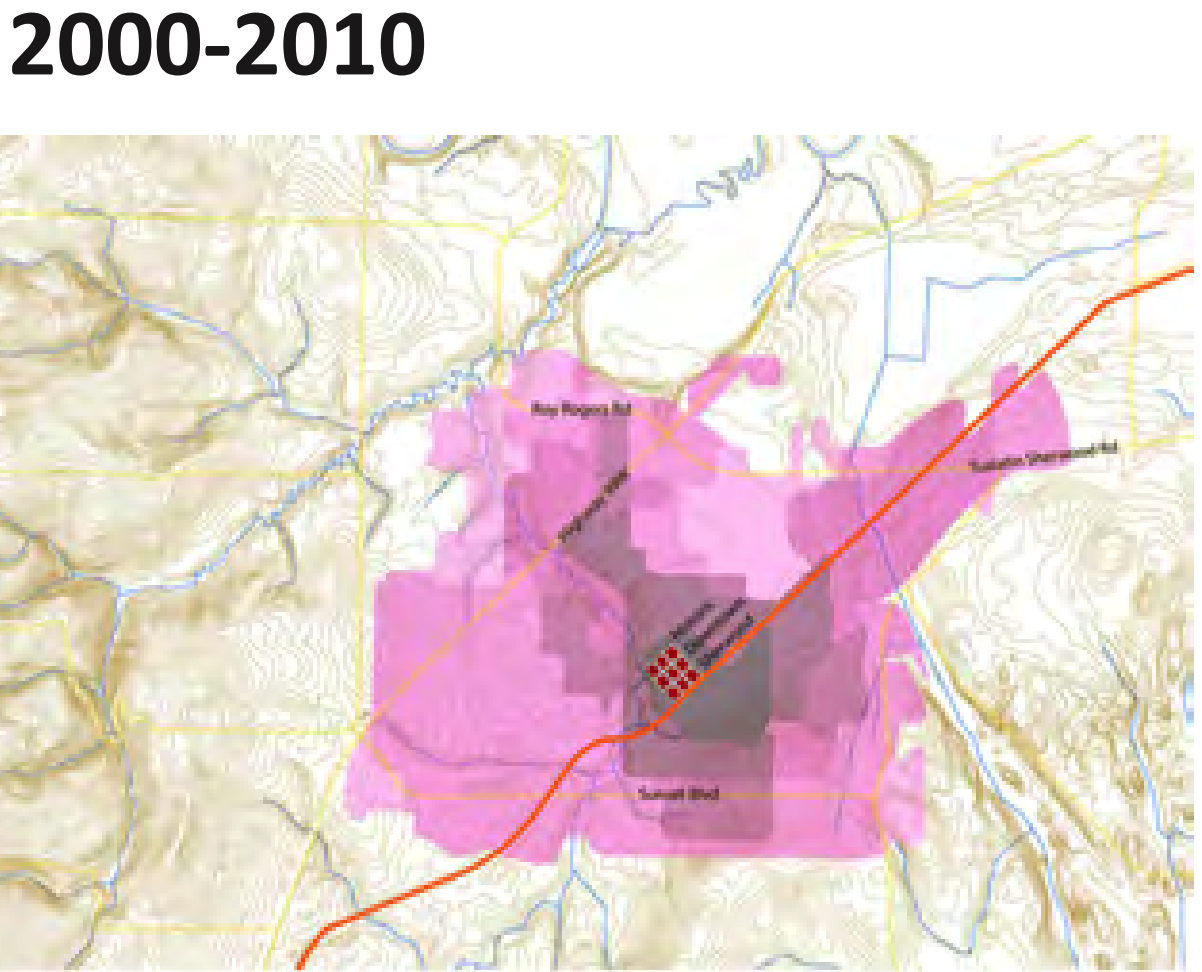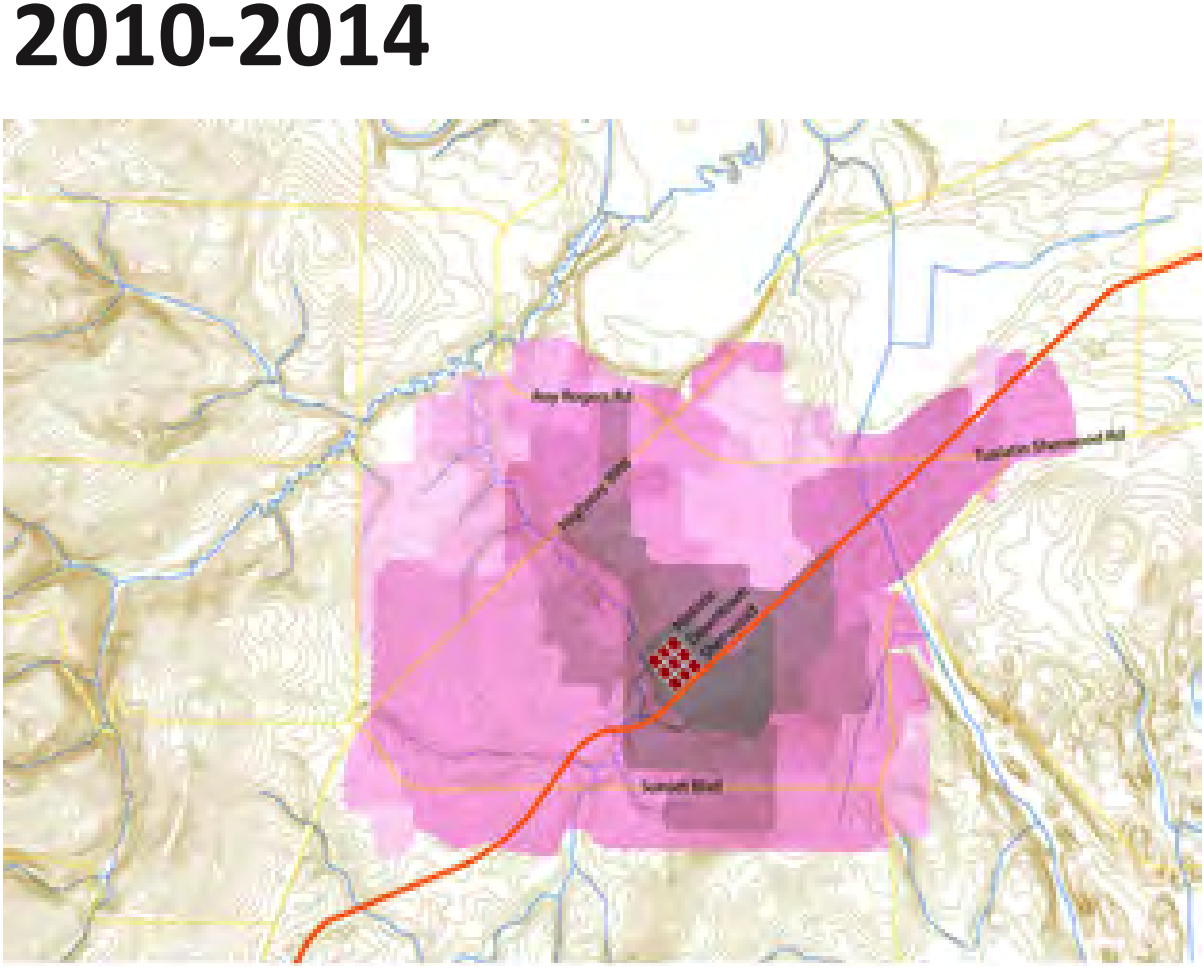Are we ready for 3,868 to 5,155 more homes?
On November 7th, 2017 in a Sherwood City Council work session, the council decided to have the city manager send a non-binding letter of interest to Metro stating our intentions to request an expansion of the Urban Growth Boundary (UGB) by 626 acres (455 developable). This letter did not commit us to a 626-acre expansion, it was only a non-binding letter of intent. The council will have to decide whether to formalize the request, change the size of the request or withdraw from the process all together.





The last time we made this much developable land available in favorable economic conditions, we tripled the size of the city in 10 years (1990-2000).
Who is Metro and why do they control the Urban Growth Boundary (UGB)
Metro is a planning and policymaking body whose mission is to preserve and enhance the quality of life in the Portland metro area. The state requires that Metro maintain a 20-year supply of developable land and grow the UGB to maintain it. By looking at population projections and density requirements and evaluating developable land, every three years, Metro determines where that growth should be absorbed. The last time Metro expanded the UGB was in 2012; the time has come once more for Metro to look at population projections and respond in 2018. Sherwood is one of 24 cities that are in Metro's jurisdiction, so Sherwood is one of the communities where expansion could be considered.
Metro does not dictate which cities get a UGB expansion. Instead, Metro requires cities to evaluate their own future housing and buildable land needs and then make a request to Metro if they determine that buildable land is needed to absorb projected growth.
Sherwood completed a housing need study and determined that there was a deficit of 497 household units in the 20-year supply.
Understanding the UGB Expansion Process
To be clear, expanding the UGB does not in itself allow development to start. The city will, per Metro regulations, need to complete a Community Plan and update the Comprehensive Plan within two years. Once those steps are completed, then land owners can use Senate Bill 1573 to force annexation and then start development. What is SB1573? Senate Bill 1573 gave home owners in the Urban Growth Boundary the ability to force the city to annex land, even when the citizens are against it. (Remember Brookman?) There are four key steps that have to happen prior to starting construction of new housing units with details on who has control over each part of the process:
- Request to Expand UGB (city controls) can request every 3 years (2018, 2021, 2024…)
- Approval of Request (Metro Controls)
- Creation of zoning and Community Plan (Metro Controls Timing - 2 Year deadline)
- Annexation of property to start development (Land Owners Control timing)
It is important to note, that the only step in the process where city can be assured of control, is step one. Also, once step 1-3 are complete, the developer can control the timing. To that point Metro's UGB FAQ States that "Cities asking for an urban growth boundary have to show that they can get dirt turned quickly" Once the UGB is expanded we loose positive control over the rate of growth.
Who are the Property Owners?
Large developers like Metropolitan Land Group have been buying up most of the land in the Urban Reserves and are now pushing to have that land brought into the Urban Growth Boundary. Hundreds of millions of dollars are on the line for these companies. These organizations have deep pockets and are already actively lobbying our local elected officials, as well as Metro, on this issue.
Given those dynamics, it is not unreasonable that this expanded area would effectively be fully developed in 10 years.
Informed decision making and planning is critical
This is why this decision is so important for Sherwood. Once we expand the UGB, the hurdles that large corporate developers have to overcome to start development, are significantly reduced. Growth is inevitable. We have to make sure that we have control over the pace of growth and that the growth is compatible with the desires of our community.
As your representative on the council, I have serious concerns about the proposed expansion. I need your input on this before I am asked to vote on whether we formalize our request for an extension of the Urban Growth Boundary this spring.
To help all of us understand what this could mean for Sherwood, I did some basic analysis of the impacts of a fully developed West Side Expansion using publicly available data. I used a range of Housing Units (HU) per acre to estimate rough impact on population growth. 8.5 to 11.3 HU's per acre. I assumed 2.89 people per household and 0.78 students per household. These demographics are consistent with Sherwood's current ratios. As more planning is done the estimates on population and school system impacts will continue to be refined. For example; there is some data that shows that the number of students in high density housing vs low density is lower, this could drive the student per households down to as low as 0.50 due to the higher ration of high density options being proposed.
Why a range of Housing Units (HU) per acre for this analysis? Two reasons; first we have not completed the planning. Our letter of interest stated 11-12 units per acre. Since that time that estimate has been refined down to 8.5 with more work to be done. It should be noted, that a formal application at an average density of 8.5 is less likely to be approved by Metro, than an application at 11.3 HU's. There will be pressure from Metro for higher densities.
So, given those assumptions, what could that mean for Sherwood over the next 10 Years?
- Accelerated growth (57% to 76% Increase in population) over the next 10 years
- Increased population density; 6,290 people per square mile. (More dense than King City, Tigard and Tualatin)
- 3,017 to 4,036 additional students in our schools.
- Unbalanced residential growth could create a $1 million deficit in annual city budget
- Higher density housing, as required by Metro, will create more home buying options at lower price points.
Looking out ten years, these are the questions before us:
- Do we want to see our population increase 57% to 76%.
- Does the School District support adding 3,017 to 4,036 more students
- Do we need to more high-density housing in Sherwood?
- Do we need more housing options to make housing more attainable in Sherwood?
- Do we believe that this expansion will create affordable housing options?
- If we expand the UGB, do we believe we can still effectively manage growth given the pressures that large developers will put on the city directly, and via Metro, to move fast?
- Have we done enough community outreach and visioning to make sure we understand what kind of growth is compatible with our values.
- Have we partnered with the school district to really understand the impact this will have on our schools. Do we need to do a more formal study before a UGB ask?
- Do we need to complete the comprehensive plan update prior to making a request to expand the UGB?
More Detail:
Accelerate Growth; 57% to 76% increase in population
- The letter of interest to Metro estimates, that fully developed, this expansion would add 3,868 to 5,155 housing units to Sherwood. There are currently 6,791 housing units in Sherwood today.
- At a current average of 2.89 individuals per housing unit, this expansion, over the next ten years, could add 11,177 to 14,898 people to our current population of 19,487. That is a 57% to 76% addition, increasing our total population to 30,950 to 34,766.
Population Growth
Increased population density; more dense than King City, Tigard and Tualatin
- The Proposed Sherwood West expansion could have a population density of 11,464 to 15,280 people/square mile (proposal is .975 square miles). Currently, Sherwood has a density of 4,318 people/square mile. The overall density for Sherwood would increase up to 6,290 people/square mile. That would take our density above King City and increase our lead over Tualatin, and Tigard.
- As an example, Woodhaven is zoned for about 5 housing units per acre. This expansion would average 8.5 to 12 housing units per acre.
Housing Unit Growth
Population increase would have a significant impact on our schools; 3,017 to 4,036 more students
- The $247M School Bond was based on a ten-year student population growth study that did not include the Sherwood West Expansion. The bond was designed to increase the school districts capacity by 2,000 students to 7,385. Adding 5,155 housing units could increase Sherwood school’s population by 3,017 to 4,036 students. That could mean 1,000 to 1,345 additional students in the new high school alone.
- In 2025, without Sherwood West, Sherwood School District was projecting 6,535 students. This expansion could lift that number to well over 10,000 by 2028; well over the capacity once the new High School is built. It should be noted that the schools projection includes the Brookman Annexation.
- A recent decision by Metro converted a future residential area in Tualatin to Industrial. This area is part of the Sherwood School District. This will reduce the housing unit forecast that the school used to plan population growth by about 648. This will create some relief on school population growth, however it will not come close to offsetting the load that the proposed Sherwood West will put on our Schools.
Unbalanced residential growth strains the city's ability to provide critical services
School Attendance Projection with and without Sherwood West (SW)
- For every $1.00 of property tax revenue the city receives for residential property, it costs $1.25 to provide services. Adding 5,150 Housing units would generate $4M in additional tax revenue for the General Fund. However, it would cost $5M to provide services to those residents, creating $1M hole in the budget each year.
- A detailed study of the Tax Base impacts for the expansion has not been completed, and should be completed prior to expanding the UGB.
- There would be a small positive impact on property taxes. Fixed amount bonds, like the $247M school bond would be spread out across additional tax-payers, effectively lowering taxes by a only a small amount. This would phase in slowly and be offset by property tax increases, due to assessed value, over time and the need for another school bond to fund more schools.
Affordable housing vs. attainable housing and creating more home buying options in Sherwood
- Expanding the UGB will create Higher Density Housing options as mandated by Metro. Higher density housing will create lower cost options for homebuyers, mainly driven by the lower square footage, small lot sizes, zero lot lines (townhomes/condos), and apartments.
- Currently only 18% of our residential land is zoned for High Density Housing options like apartments, family homes and townhomes. The Remaining 82% is zoned for Low Density Single Family Homes. This zoning imbalance makes it very difficult for people to find housing options that are affordable.
- Given the popularity of Sherwood, the prices for these High Density options would still be higher than surrounding areas for similar housing units. This is why it is more appropriately called "attainable housing," not "affordable housing".
Politically, it might not be the right time to ask Metro for an expansion of the UGB.
- Multiple cities around us are positioning for big asks of Metro during this cycle (Wilsonville, King City and Hillsboro).
- Sherwood is in the process of updating its Comprehensive Plan. We are not scheduled to have that done until next year. Asking Metro for an expansion, when we have not completed the Comprehensive Plan decreases our odds of getting this approved.
- An incomplete Comprehensive Plan is a signal to Metro that we have not truly engaged the community in what they want when it comes to this project.
- Sherwood has typically had a focus on Low Density Housing. Metro is focused on High Density Housing. This works against us when Metro starts picking winners and losers and comparing the proposals from the different cities.
Supporting Doc's and Data
- Letter of Interest to Metro
- Metro UGB FAQ
- SB1573 Text
- Sherwood West Concept Plan
- 2015 PD Staffing Study
- Sherwood Schools Population Forecast
- Map of SSD Growth Asumptions
- Sherwood School Bond Summary
- Sherwood Historical Population Data
- Housing Data for Sherwood
- Population Density Data
- Historical Housing Start Information
- Real Estate Data for Sherwood
- Metropolitan Land Group - Projects Page
- Property Tax Report
Propsed Sherwood West UGB EXPANSION

